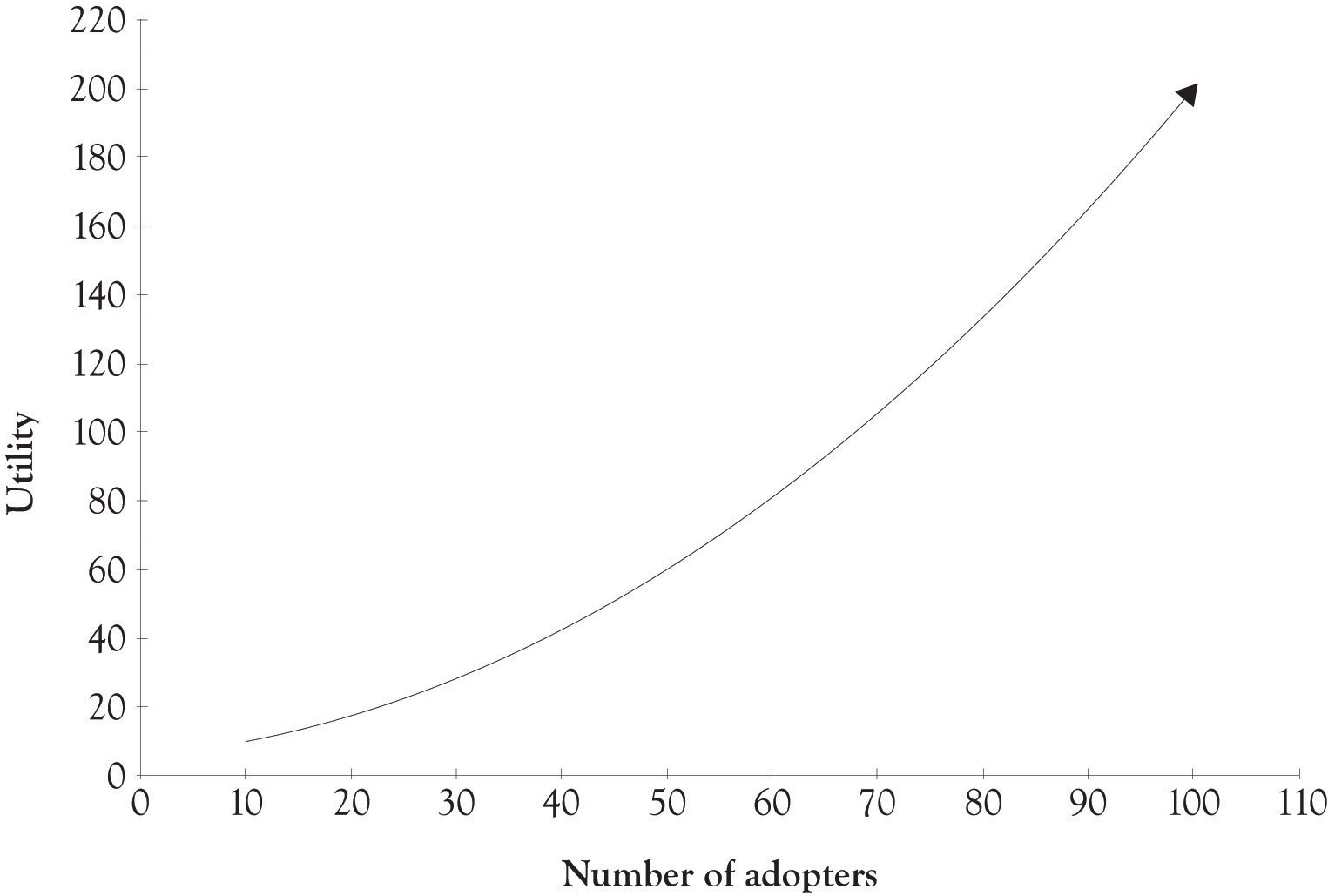This is “There is Power in Numbers: Network Effects and Metcalfe’s Law”, section 1.12 from the book Creating Services and Products (v. 1.0). For details on it (including licensing), click here.
For more information on the source of this book, or why it is available for free, please see the project's home page. You can browse or download additional books there. To download a .zip file containing this book to use offline, simply click here.
1.12 There is Power in Numbers: Network Effects and Metcalfe’s Law
Metcalfe’s lawThe value or utility of a network is proportional to the number of users of the network. states that the value or utility of a network is proportional to the number of user’s of the network. At one time, Metcalfe indicated that utility was a square function (utility = n2). For example, a phone network with 10 people has a utility of 100 and a network with 100 people has a utility value of 10,000. He has since scaled that back and the utility of a network is based on a log function (utility = n × log(n)).VC MIKE (2010). The log model is presented in Figure 1.7 "The Size of the Network Increases the Value of the Network". Thus, for a 100-user network, this would translate to utility = 100 × 2 = 200 or 200 utility units. The equation is not the important issue. It is the idea that if you have more people using a phone, a fax, railroad, a Web 2.0 application or whatever, your network will become more attractive and attract even more users. Consider the choice to go with a local cable TV network or a satellite TV network. If individuals take into account what network other people are choosing, then there is a network externality or a network effect that influences the decision.
In the economics literature, a network effect typically refers to a change in the positive benefit that a consumer receives from a good, when the number of consumers of the good increases.Liebowitz and Margolis (1994). Network effects are not limited to phone, wireless, and telecommunications networks. They can also include the following:
- Transportation networks such as roads, railroads, and flight paths.
- Communication systems such as the postal service, express mail services, and pony express.
- Communication media such as books, printed materials, schools, and universities, because they disseminate ideas and knowledge and those ideas have greater utility.
- Social networks involving a social structure between individuals or organizations with similar interests. They include political, cultural, religious, sports clubs, social clubs, volunteer groups, family, friends, industry trade groups, and market segments. Facebook, Twitter, and Web 2.0 social-networking applications.
Figure 1.7 The Size of the Network Increases the Value of the Network

Economists also talk about network failuresA situation where the technology or network selected is not the best technology, thus leading consumers and business down a path that is not optimum.. That is a situation where the technology or network selected is not the best technology, thus leading consumers and business down a path that is not optimum. In reality, consumers are often very aware of the trade-offs in performance that exists between competing technologies. Take the case of the success of the VHS recording format over the Beta format. The success of VHS is often touted as an example of network failure. The picture quality of the VHS format was, in fact, reasonably close to the quality of the Beta format.Liebowitz and Margolis (1994). In addition, the VHS tapes had a greater capacity and cost less than the Beta tapes. It was not a failure of the market to recognize the superiority of Beta; it was rather that consumers revealed their preferences for certain features by purchasing the VHS format.
The best of all worlds is when the stars are aligned properly and an organization can realize network effects and take advantage of Moore’s law by increasing the performance of a product while reducing or maintain costs. The net result is to spur hypergrowth in the diffusion and sales of a product or service.




